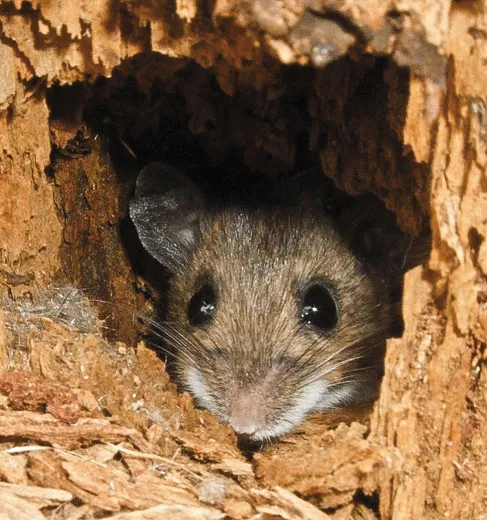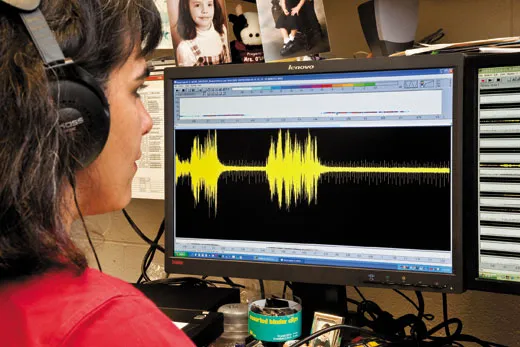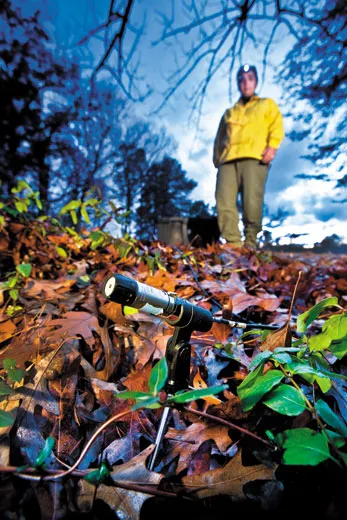The Mystery of the Singing Mice
A scientist has discovered that high-pitched sounds made by the small rodents could actually be melodious songs
In late 1925, one J. L. Clark discovered an unusual mouse in a house in Detroit. It could sing. And so he did what anyone might have done: he captured the mouse and put it in a cage. There it produced a lyrical tune as if it were a bird. A musician named Martha Grim visited the mouse, commented on the impurity of its tones and left, musical standards being high in Detroit. Clark gave the mouse to scientists at the University of Michigan. The scientists confirmed that the mouse could sing and then bred it with laboratory house mice. Some offspring produced a faint “chitter,” but none inherited the father’s melodic chops. These observations were all noted in a scientific article in 1932 and mostly forgotten.
Recently, though, Matina Kalcounis-Rueppell, a biologist at the University of North Carolina, Greensboro, revisited the mystery of the singing mouse. And after figuring out how to listen to mice on their own terms, she heard something entirely new.
I met up with Kalcounis-Rueppell and a group of her students at a field site in North Carolina. We wore hard hats and carried traps, notebooks, scales, a laptop computer, recording equipment and a web of six long cables connected to microphones into which we hoped the mice would croon. The forest where she works is not majestic or primeval; it’s surrounded by fields of corn, tobacco and cotton. But to her it is perfect. “The pine litter is quiet,” she said. “There aren’t many other singing things, like insects, on the ground. Pine forests are among the quietest forests.” Conscious of the sound of my own voice, I stopped talking as we stepped over logs and under the branches of loblolly pine trees to hook up the microphones.
When Kalcounis-Rueppell was 19, she had an internship with the University of Regina in Saskatchewan to study bat behavior. It led her outside at night, and she never really came back in. She is now a behavioral ecologist, an expert in how animals use sound. By now she has spent thousands of hours working at night in forests. She became a connoisseur of sounds: bats clicking, katydids scraping and frogs croaking. Every so often, she would hear sounds she could not identify.
Kalcounis-Rueppell suspected that some of the sounds she heard at night might be coming from mice. She knew that a singing mouse, like the one in Detroit, had occasionally been reported in the scientific literature, and that lab mice sometimes make sounds too high to be heard by human ears. But such high-pitched sounds had never been studied in the wild. While she was conducting research in Monterey County, California, at a site where she had been working since 1996, she wondered if local mice, two species of the genus Peromyscus, were calling all around her, perhaps even mumbling about her presence. On some nights, she thought she heard them, at the edge of her ability to hear, the way a sailor might perceive land just over the horizon.
In 2004, Kalcounis-Rueppell and a friend borrowed hand-held recorders capable of recording ultrasonic emissions and took them to her California field site. She had already captured, marked and released many of the mice there as part of a study on their behavior. She knew the individuals by name, or at least by the numbers she had given them on little tags clipped on their ears. She also knew where they lived. She put microphones in their territories and waited.
After a long night, the researchers took the equipment back to the lab. They listened to the recordings through headphones at a slow speed, which lowered the frequency of the sounds (the way you might make your own voice sound more like James Earl Jones’). They listened for unusual sounds. If they found one, they used a computer to convert the recording into a spectrograph, a kind of hill and valley plot of the sounds’ frequency.
One of Kalcounis-Rueppell’s colleagues heard something unusual, something loud. They analyzed the sound on the computer and saw a plot that was entirely new, the four-note song of what would prove to be a deer mouse. Played back at slow speed, it sounded a little like the wooing song of a whale, a plaintive rise and fall.
Kalcounis-Rueppell has now translated the ultrasonic utterances of the wild mice from her first study site and is working on their Eastern North American relatives. Her research and that of others suggest that some songs are produced only by males or only by females. There are even greater differences from one species to the next, akin to those, say, between a robin and a wren. Perhaps these differences help the mice tell each other apart. Some species’ songs get more complex as a mouse grows older. The songs may be innate; young mice raised in the lab by mice of a different strain retain their own strain’s song. Kalcounis-Rueppell and her students have evidence of vocalizations in four wild species and suspect that many others sing. The world of rodents, long thought mostly quiet, may be full of songs, broadcast short distances, from one animal to another, songs that we still know very little about.
I asked Kalcounis-Rueppell whether there could be mouse versions of the mockingbird—mockingmice—which mimic the songs of other animals. “No, probably nothing like that,” she said. After a pause she said, “Maybe a mockingmouse, yes, that seems possible. But who knows?”
Her discovery reminds us that each species perceives the world in a unique way, with a finely tuned set of senses, and so finds itself in a slightly different world. Bacteria call to each other with chemicals. Mosquitoes detect the carbon dioxide we exhale. Ants see polarized light. Turtles navigate using the earth’s magnetic field. Birds see ultraviolet markings on flowers, signs invisible to us. Snakes home in on the heat in a cougar’s footprint or a rabbit’s breath. Most of these different worlds are little understood because of the narrow reach of our own perceptions. Kalcounis-Rueppell hears music in the dark, but as a species we still fumble around.
I am still waiting to learn what we recorded when I visited Kalcounis-Rueppell’s North Carolina field site. Analyzing the field recordings is a slow process. That night we captured sounds near just a few mice, but the recordings require so much computer memory that they must be parsed into many separate files, 1,872 in total, which still need to be processed one by one. Maybe what we recorded was just noise, but maybe it was beautiful.
Rob Dunn’s next book, The Wild Life of Our Bodies, will be published in July.


